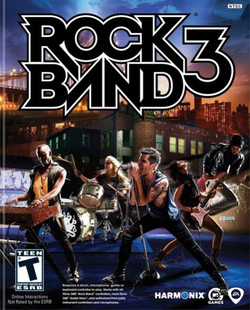|
Release: 2010
Platform: Xbox 360, Playstation 3, Wii Studio: Harmonix Publisher: MTV Games, Electronic Arts rockband.com |
By the third title in the Rock Band series, developers and players were looking for something to elevate the gameplay. This came in the form of real instruments.
Over the years we had received many heartwarming letters from players, detailing their adventures in learning guitar or drums and forming real bands. Prior installments had done a good job imparting the fundamentals of musicality— rhythm, pitch, harmony— so it seemed that learning an instrument from a video game should be possible. UI proved to be the biggest challenge. Tablature is the established system for guitar notation, but sight-reading at the speed of a song was difficult, even for experienced musicians. After many iterations, a visual language matching chords to distinct shapes proved to be reliable and usable even for new guitarists. My contributions included...
Typical design questions
|
